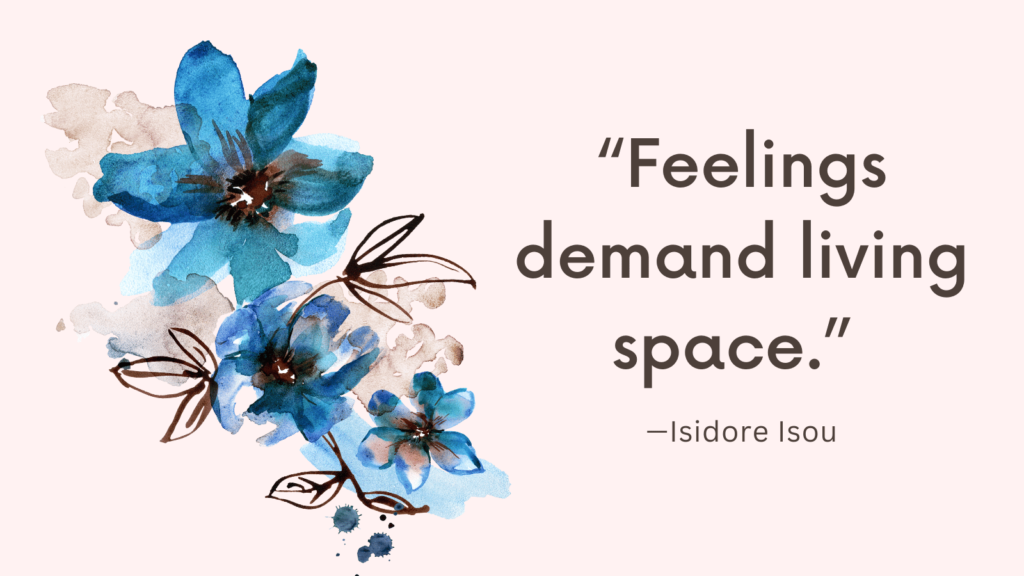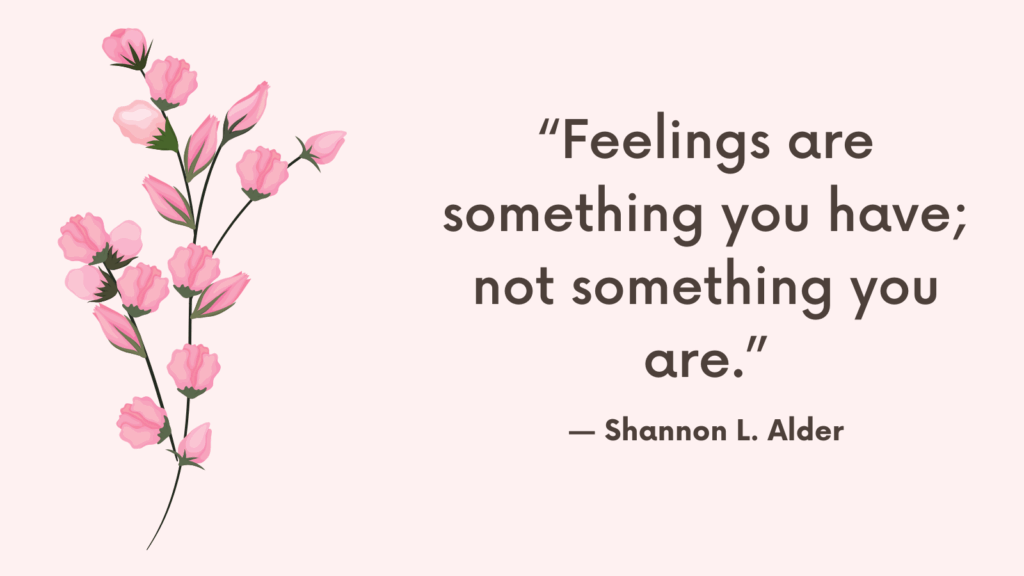In this post, you’re going to learn all about silent anger – what it is, its symptoms and how to manage it.
What Is Silent Anger?
Silent anger is a type of anger that is not openly expressed or overtly displayed.
It refers to the internalization of anger, where individuals may suppress or repress their feelings rather than expressing them outwardly.
Unlike explosive anger, which involves outward displays of anger such as yelling or physical aggression, silent anger operates on an internal level.
It can be challenging to detect in oneself or others, as it often hides beneath a calm and composed exterior.
However, the consequences of silent anger can still be significant, impacting emotional well-being and relationships.
People experiencing silent anger may resort to indirect methods of expressing their anger, such as sarcasm, subtle insults, or intentionally delaying tasks.
This passive-aggressive behavior can be damaging to relationships and lead to misunderstandings or conflicts.
Additionally, silent anger may result in emotional withdrawal, causing individuals to isolate themselves emotionally from others.
They may become distant, avoid social interactions, or have difficulty expressing their true thoughts and feelings.
This withdrawal can lead to feelings of loneliness, frustration, or even depression.
Silent anger can also manifest as physical symptoms, such as headaches, muscle tension, digestive problems, or even chronic pain.
These physical manifestations are the body’s way of expressing the underlying anger that is not being outwardly acknowledged or addressed.
It is important to understand that silent anger is not a healthy or sustainable way to deal with anger.
It can affect mental and physical health, strain relationships, and hinder personal growth.
Remember, anger is a normal emotional response, and learning to express it constructively and assertively is a valuable skill for maintaining emotional balance and fostering healthy relationships.
Related: Top 14 CBT Exercise For Anger Management (+FREE Anger Worksheets)
Top 10 Silent Anger Symptoms
Here are some common silent anger symptoms:
1. Passive-aggressive behavior
People with silent anger often exhibit passive-aggressive behavior as a way to indirectly express their anger.
This behavior includes sarcasm, subtle insults, sabotaging others’ efforts, or intentionally withholding information or support.
2. Emotional withdrawal
Those experiencing silent anger may withdraw emotionally, becoming distant or aloof.
They may isolate themselves from others, avoid social interactions, or have difficulty connecting with people on an emotional level.
3. Physical symptoms
Silent anger can manifest in physical symptoms such as headaches, muscle tension, stomachaches, or difficulty sleeping.
These physical manifestations are a result of the stress and tension that accumulates from suppressed anger.
4. Chronic irritability
Individuals with silent anger may display chronic irritability or a short fuse.
Small frustrations or inconveniences can trigger an intense emotional response, leading to outbursts or intense reactions disproportionate to the situation.
Related: Assertive Anger: What It Is & How to Practice It
5. Passive demeanor
People experiencing silent anger often maintain a passive demeanor, giving the impression that they are compliant and agreeable.
However, underneath this façade, there may be a brewing resentment and anger that is left unexpressed.
6. Rumination
Silent anger can lead to a cycle of rumination where individuals repeatedly revisit situations or events that made them angry.
This constant mental replaying of past experiences keeps the anger alive and can contribute to feelings of frustration and bitterness.
7. Indirect communication
Rather than openly expressing their needs or concerns, those with silent anger tend to rely on indirect communication.
They may use hints, body language, or expect others to read between the lines, making it difficult for others to understand and respond to their underlying anger.
Related: Anger Iceberg: How to Use It (+FREE Anger Iceberg Worksheet PDF)
8. Increased sensitivity
Silent anger can heighten sensitivity to criticism or perceived slights.
Individuals may become defensive, overreact, or take things personally even in situations where the perceived offense is minor.
9. Difficulty setting boundaries
People experiencing silent anger often struggle to set clear boundaries, which can lead to feelings of being taken advantage of or resentment towards others.
They may have a hard time saying no or expressing their preferences and needs.
10. Escapist behaviors
Some individuals with silent anger may engage in escapist behaviors to distract themselves from their anger.
This could include excessive alcohol or drug use, excessive work, or immersing themselves in hobbies or activities as a means of avoiding dealing with their emotions.
It is important to note that while these symptoms may indicate the presence of silent anger, they can also overlap with other emotional or psychological difficulties.
Related: Best 10 Anger Management Books And Workbooks

How to Manage Silent Anger?
Managing silent anger involves a combination of self-reflection, emotional awareness, and effective communication skills. Here are some strategies that can help you manage and address your silent anger:
#1. Self-awareness
Start by recognizing and accepting that you are experiencing silent anger.
Understand that it is okay to feel anger and that it is a valid emotion.
Acknowledging your feelings is the first step towards managing them effectively.
#2. Explore underlying causes
Reflect on the possible reasons behind your silent anger.
Is it due to past experiences, unresolved conflicts, or unmet needs?
Understanding the root causes of your anger can help you address them more directly.
Related: Top 15 Anger Journal Prompts (+FREE Worksheets)
#3. Practice mindfulness
Mindfulness can help you cultivate present-moment awareness and reduce emotional reactivity.
Mindfulness allows you to observe your anger without judgment, which can promote understanding and self-control.
The following is an exercise you may find helpful:
1. Find a quiet and comfortable place to sit or lie down.
2. Close your eyes and take a few deep breaths, allowing yourself to relax.
3. Begin by focusing your attention on the physical sensations in your body. Notice any areas of tension or discomfort.
4. As you breathe in, imagine inhaling a sense of calm and peace. As you exhale, imagine releasing any anger or tension from your body.
5. Shift your focus to your emotions. Acknowledge the presence of anger without judgment or resistance. Allow yourself to fully experience it.
6. Observe any thoughts or stories that may be fueling your anger. Recognize that these are just passing mental events and don’t define you.
7. Take a moment to label your emotions. Say to yourself, “I am feeling angry right now.” This simple act of labeling can create some distance from the emotion.
8. Practice non-reactivity by becoming an impartial observer of your anger. Simply notice it without getting caught up in it or acting upon it.
9. Gradually expand your awareness to your surroundings. Notice any sounds, smells, or textures around you. Allow yourself to become present in the moment.
10. Finally, cultivate self-compassion. Offer yourself kind and supportive words, acknowledging that anger is a normal human emotion.
11. When you’re ready, slowly open your eyes and gently bring your attention back to the present.
Related: Best 6 Mindfulness Exercises For Beginners (+FREE Resources)
#4. Healthy outlets for expression
Find healthy ways to express your anger.
Engaging in physical activities like exercise or sports can help release pent-up emotions.
Journaling, drawing, or talking to a trusted friend can also provide a safe space to express your feelings without causing harm to yourself or others.
#5. Develop assertive communication skills
Learn to express your needs, concerns, and boundaries assertively rather than resorting to passive-aggressive behavior.
Practice using “I” statements to express how you feel and what you need, while still being respectful of others.
For example, instead of saying, “You always make me so angry,” say something like, “I feel angry when this happens.”
Clearly describe the behavior or situation that triggered your anger. Avoid generalizations or personal attacks. Stick to the facts and provide concrete examples.
Clearly state what you need or expect to happen to resolve the issue. Be specific and realistic about your requests.
Once you’ve expressed your anger, allow the other person to share their perspective without interrupting or getting defensive. Active listening shows respect and helps maintain open communication.
Try to understand the other person’s point of view and show empathy. This can help defuse further conflict and encourage resolution.
If necessary, clearly communicate your boundaries and what behavior is unacceptable to you. Reinforce that you expect these boundaries to be respected.
Related: Top 5 Tips On How To Be Assertive Without Being Rude
#6. Conflict resolution
If your silent anger is related to unresolved conflicts, consider seeking assistance from a mediator or counselor to help facilitate open and constructive dialogue.
Learning conflict resolution skills can enable you to address differences in a healthier and more productive manner.
#7. Improve emotional intelligence
Enhance your understanding of emotions, both within yourself and in others.
Emotional intelligence involves recognizing and managing your own emotions while being empathetic towards others.
Take regular moments of self-reflection to ask yourself questions such as “How am I feeling right now?” or “What is causing these emotions?” This exercise encourages introspection and helps you develop a deeper understanding of your emotional state.
Developing these skills can improve your ability to communicate effectively and navigate conflicts.
Related: Top 19 Emotional Intelligence Activities (To Improve Low Emotional Intelligence)
#8. Seek professional help if needed
If your silent anger persists or significantly impacts your daily life and relationships, consider reaching out to a psychologist or mental health professional.
They can provide guidance, support, and evidence-based interventions tailored to your specific needs.
#9. Practice self-care
Taking care of your overall well-being is crucial in managing silent anger.
Get enough sleep, eat a balanced diet, engage in activities you enjoy, and prioritize self-care practices that promote relaxation and stress reduction.
When our physical and mental health is in balance, we are better equipped to manage our emotions.
#10. Cultivate empathy
Empathy involves putting yourself in someone else’s shoes and understanding their perspective.
Practicing empathy can help diffuse anger and promote understanding in situations where you may be triggered.
It can also aid in developing healthier and more meaningful connections with others.
Related: Best 35 Journal Prompts for Releasing Difficult Emotions
Conclusion
Managing silent anger takes time and patience.
Don’t hesitate to seek support from loved ones or professionals along this journey.
With the right tools, you can develop healthier ways of dealing with anger, leading to improved emotional well-being and stronger relationships.



